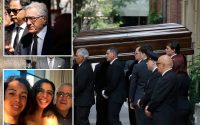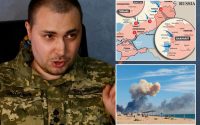WWII sailor from NJ’s remains returned after nearly 80 years
After almost 80 years, a World War II sailor’s remains once declared “non-recoverable” were returned to his New Jersey home.
Anthony Di Petta, a Nutley, N.J., resident who served as a US Navy aviation ordnanceman during World War II, was brought home on Friday, the Department of Defense said.
The 24-year-old’s plane was shot down by enemy fire in September 1944 while he was on a mission in the Western Pacific.
The plane was conducting air strikes against enemy targets in Malakal Naval District, Palau Islands, when it crashed into the Pacific Ocean.
The Grumman TBM-1c Avenger was last seen spinning violently at 5,000 feet.
De Petta was initially declared missing in action.
Following the war, the American Graves Registration Service, the organization that searched for and recovered fallen American military members, scoured the battle area and crash sites near Palau, which is about 850 miles southeasts of Guam and 500 miles west of the Philipines.

They halted the mission in 1947 and, unable to find any evidence of Di Petta or his aircraft, declared him non-recoverable on July 16, 1949.
From 2003 to 2018, the BentProp Project, now known as Project Recover, and the Defense POW/MIA Accounting Agency resumed the search, conducting six investigations.
In 2015, Project Recover, a nonprofit organization that aids in the search and recovery of missing Americans, located Di Petta’s downed Avenger in Palauan waters.
In September 2021, Project Recover found additional remains and material evidence, which were sent to the DPAA laboratory at Joint Base Pearl Harbor-Hickam, Hawaii, for analysis.
Dental records and mitochondrial DNA were used to identify Di Petta’s remains. The news was confirmed on Jan. 3, and his family was notified. He will be buried in Wrightstown, NJ, on Tuesday, the Defense Department said.
A native of Italy, Di Petta immigrated to the US around 1921 and enlisted in the US Navy by 1940.
His name is engraved on the Walls of the Missing at the Manila American Cemetery and Memorial in the Philippines, along with others still missing in action from WWII. A rosette will now be placed next to his name to show that he has been accounted for.


